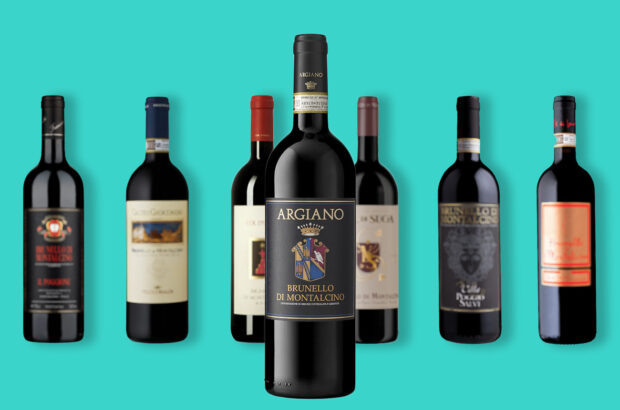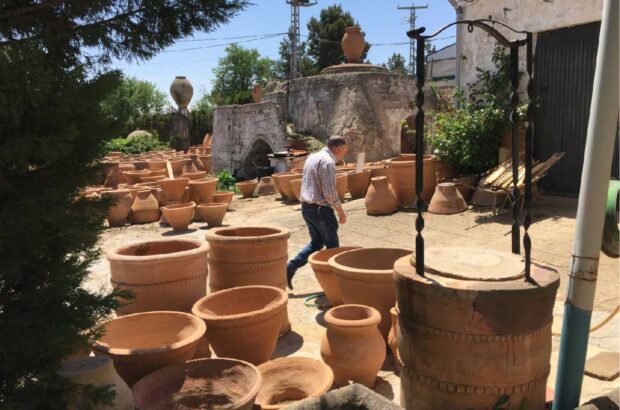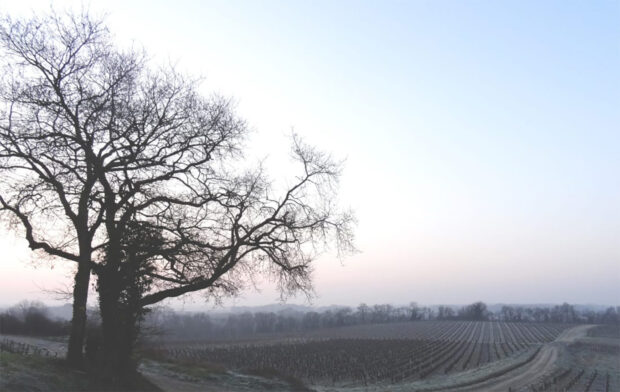The alarm goes off at any time of night in Philippe Bascaules’ bedroom. It isn’t faulty. It’s linked to thermometers and is telling Bascaules that frost is threatening the Château Margaux estate in Médoc. He doesn’t hang about. Within minutes he’s out of bed and down checking both temperature readings and the sky. If these confirm the alarm’s strident warning, he then does something which, to the non-viticulturists among us, appears a little crazy. He turns on the watering. Watering? As ice threatens? Is the man a hooligan? On the contrary, he is using what many now consider to be the most effective weapon against the wine producer’s greatest enemy. ‘Without it, 100% of our 1994 and 1997 Pavillon Blanc harvests would have frozen,’ he says.
Bordeaux’s worst frost since 1991 – What now?
Frost on the vineyards
Frost is devastating and notably, of course, in spring. In winter, the dormant plants tolerate temperatures down to -15˚C. Come shoots and bud-break from March through May, however, and -2˚C does the damage. No-one even vaguely connected with the Bordelais has forgotten the 1991 April nights when a -7˚C frost saw off almost 60% of the regional harvest. In the circumstances, those with limited means simply hope for the best – or, rather, hope for subsidies if and when frozen disaster strikes. ‘People are fatalistic,’ says Adrian Mould, director of the Cabardes AC syndicate across in Languedoc. The story is the same for the mass of Bordeaux producers.
As ever, the more affluent are in a different league, though, and are increasingly investing large sums to protect at least their most frost-exposed parcels. Naturally, not even the biggest wine fortune can guarantee 100% effectiveness – the iceman is more than a match for money – but huge wind machines and smaller fuel-burners now dot the springtime landscape and, for between £10,000 and £20,000 per hectare, you can install a sprinkler system just like they have at Margaux. More precisely, it’s on Margaux’s Pavillon Blanc land, which produces one of the Médoc’s best Sauvignon whites and is a vital three kilometres west of the main estate. ‘Nearer the river, Margaux itself is relatively frost free,’ says Bascaules. ‘But Pavillon Blanc freezes one year in three.’
Protecting the buds
So how, you may ask, do you protect buds from ice by watering them? The key is to switch the sprinklers on just before the freeze and leave them on. As the temperature hits 0˚C, the water forms a layer of ice on the buds. This sounds dangerous but isn’t because, as the sprinkling continues, the water runs down the outside of this ice layer and keeps the bud temperature at around zero. In other words, it stops it dropping to the killer -2˚C level – even if the air temperature is -7˚C, or lower. Success or catastrophe hangs on those two little degrees.
Of course, it’s hugely expensive in equipment and water, but it takes only one man to operate, uses no diesel and, most importantly, it works – as long as you leave the watering on until the ice layer is thawing. As Arnaud Thomassin at the Château de France (Pessac-Léognan) points out, switch them off before and the effects of evaporation will plunge the bud temperature well below freezing and all the good work will therefore be undone.
If they’re not using sprinklers, many leading Bordeaux producers, such as Pétrus in Pomerols or the Domaine du Chevalier in Graves, put faith in fuel-burners. They call them chaufferettes. Chevalier installed its chaufferettes in 1992 – after the great 1991 freeze – on four hectares of Sauvignon Blanc and Sémillon which were particularly susceptible to frost. ‘The costs are enormous,’ says Chevalier’s Rémi Edange, ‘but we spare no expense on the whites.’ It’s not difficult to see where the money goes. Chevalier demands 200 burners per hectare, plus all the pipe-work, plus seven or eight men to switch them all on, which takes an hour. Each burner uses five litres of fuel an hour – that’s 4,000 litres an hour in total – and they can be left on for eight hours. ‘But,’ says Edange, ‘we saved our 1994 and 1997 crops.’
The great thing about sprinklers and, to a lesser extent, chaufferettes, is that they offer some protection against both the white hoarfrosts of spring and the more terrible, black winter frosts when Arctic air descends. Unfortunately, the third (and cheapest) main anti-ice weapon, the 35-feet high windmills, are effective only against white frosts: because, unlike the black frost, the spring frosts create freezing temperatures at ground level only. Higher up at, say, 30 feet, the temperature may be +2˚C and double that at 60 feet. Equipped with a 17-foot propeller, the towering ‘mill’ directs the warmer air from higher up towards the ground. The resulting turbulence keeps the temperatures safe around the vines.
Rémi Edange at Chevalier uses these aéolians on parcels unprotected by fuel-burners and reckons to cover three hectares with one machine. He also boosts their effectiveness by using helicopters to stir the air, ‘though less often these days,’ he says. ‘They’re expensive to hire and can’t always take off when you want them to.’ And neither aéolian nor helicopter is any use against the tougher black frosts, when the air is uniformly freezing. ‘We tried a helicopter in 1991,’ says Florence Cathiard at Château Smith-Haut-Lafitte in Graves. ‘But found we were simply sending very cold air from on high down on to very cold air below.’
There are other anti-frost expedients. On their Cantelys domaine, less than a kilometre from Smith-Haut-Lafitte but much more prone to frost, the Cathiards have dug a half-hectare lake to generate ice-impeding mists. They’ve also cleared the surrounding land of undergrowth, so air may circulate more freely. At Margaux, Philippe Bascaules has tried heated underground cables and plastic greenhouse-style covering with mixed results. What all these measures have in common, of course, is their expense. ‘If you can’t afford them,’ says Rémi Edange, ‘the only alternative is to go to church – often.’












